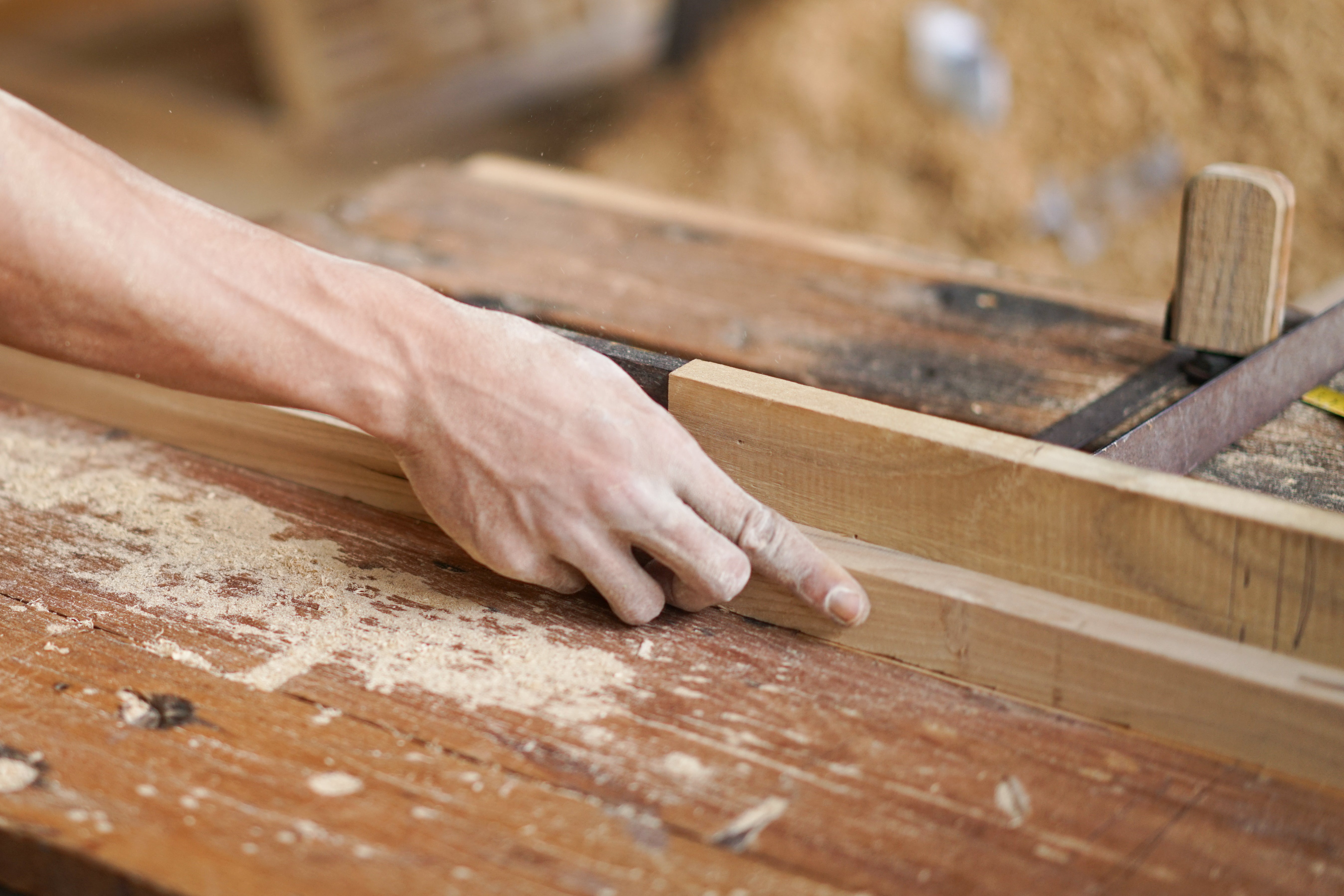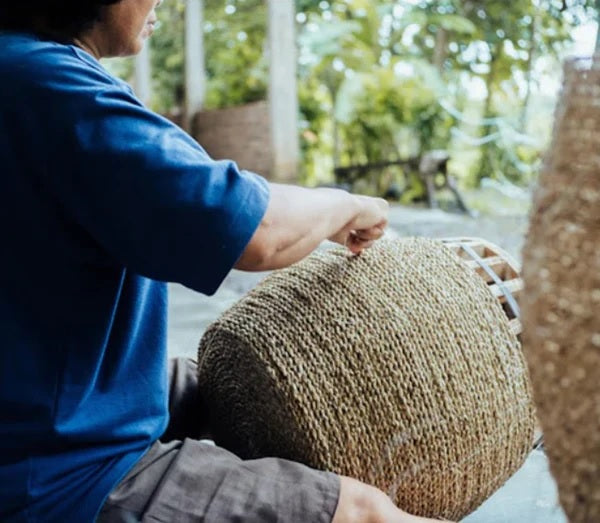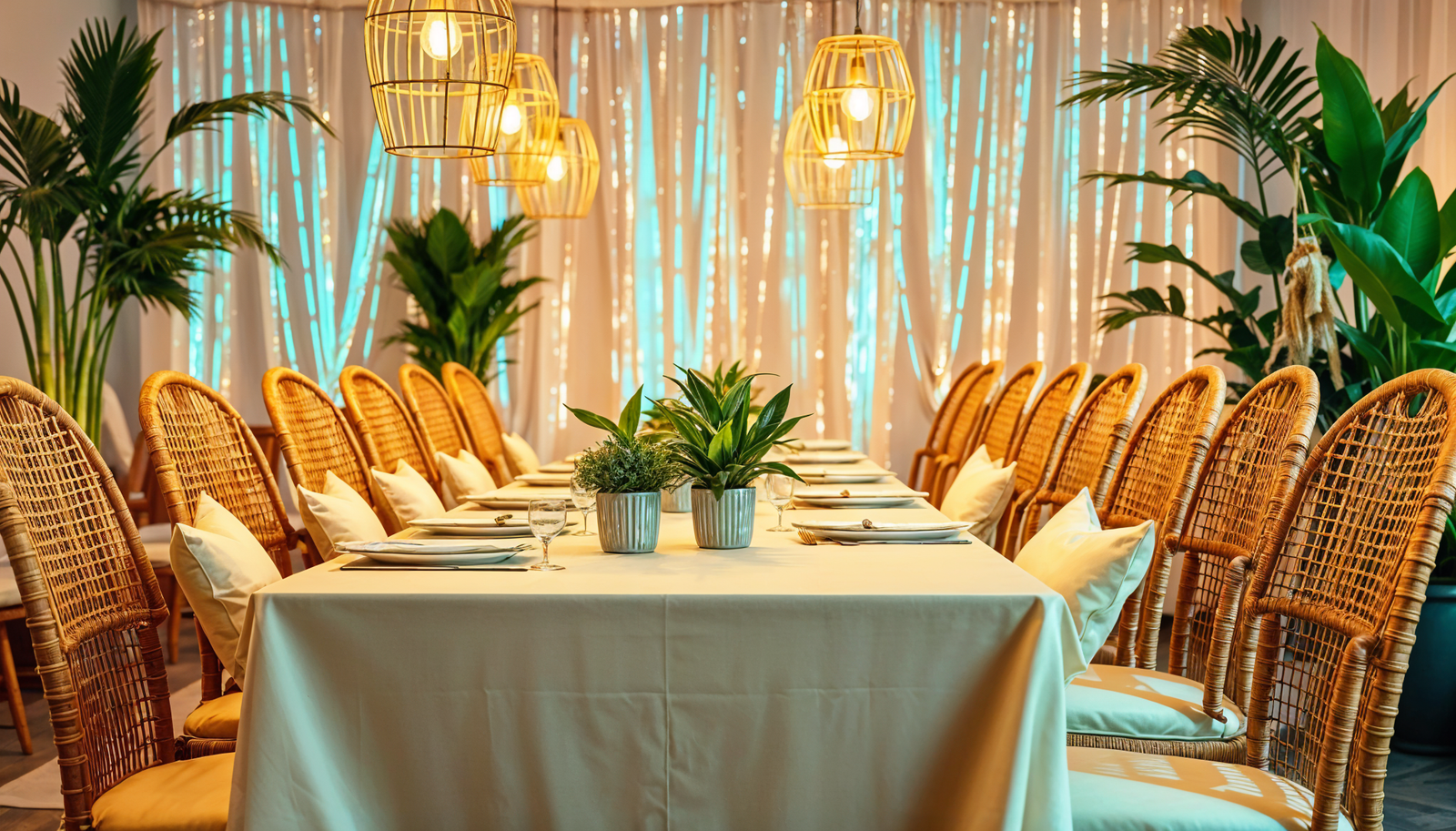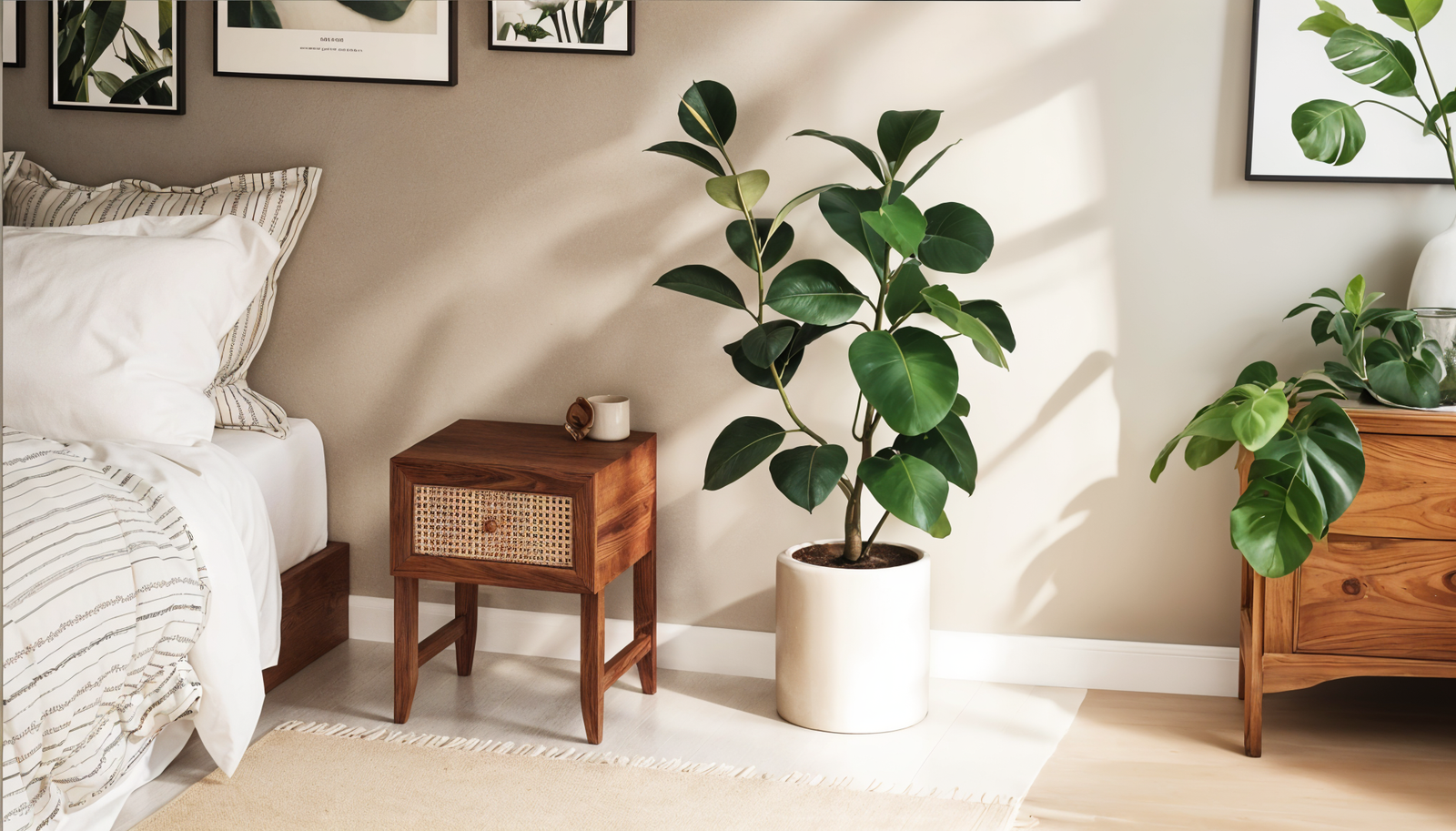🤍 Unmatched Quality, Authentic Craftsmanship
🤍 Unmatched Quality, Authentic Craftsmanship
🤍 Unmatched Quality, Authentic Craftsmanship
As awareness of environmental issues continues to grow, more and more people are seeking out eco-friendly alternatives in all aspects of their lives, including furniture.
But what is eco-friendly furniture made of? And what materials are used to create sustainable and environmentally conscious pieces?

In this guide, we will explore the world of eco-friendly furniture, discussing the materials and manufacturing processes that make it a more sustainable choice.
From reclaimed and recycled materials to low-VOC finishes and renewable resources, there are many options available for those who want to furnish their homes in an environmentally responsible way.
By understanding the benefits of eco-friendly furniture and learning how to identify sustainable options, you can make informed choices that align with your values and contribute to a healthier planet.
So, if you're curious about what eco-friendly furniture is made of and why it matters, keep reading!
Eco-friendly furniture is typically made using materials that are sustainably sourced and have a lower environmental impact than traditional furniture.
Let's explore the popular materials used to make eco-friendly furniture.

Sustainable wood options such as bamboo, rattan, or reclaimed wood are popular materials used to make eco-friendly furniture.
Bamboo is a fast-growing material that can help reduce deforestation and is often found in chairs and tables.
Rattan is a lightweight material that is harvested sustainably and used for furniture like armchairs and ottomans.
Reclaimed wood can be sourced from old buildings and furniture, helping to reduce the demand for new wood.
Natural fibers such as organic cotton or hemp are also commonly used to make eco-friendly furniture.
Organic cotton is a breathable and durable material that is often used for upholstery, while hemp is a strong and sustainable source that can be found in pieces like sofas and dining chairs.
Natural fibers are harvested sustainably and do not require the use of toxic chemical treatments or finishes, making them healthier for both people and the environment.
Non-toxic and low-VOC finishes and paints are a great way to ensure that the eco-friendly furniture you choose is not only sustainably sourced but also healthy for you and your family.
Low-VOC paints and finishes help reduce air pollution, as they contain fewer toxins than traditional products.
Non-toxic finishes are also ideal, as they contain no harmful chemicals or volatile organic compounds.
Eco-friendly furniture is an excellent way to make your home more sustainable and healthier for you and the environment. By choosing materials like sustainably sourced wood, organic cotton, hemp, and non-toxic finishes, you can help create an eco-friendly home and contribute to a healthier planet.
Now that you know the importance of eco-friendly furniture and the eco-friendly furniture materials that are used in making it, let's explore the production process for eco-friendly furniture.

Creating eco-friendly furniture requires careful thought and consideration of the manufacturing processes used.
Many companies use sustainable production practices to reduce their environmental impact, benefit local communities, and create unique pieces that are durable and built to last.
The manufacturing industry aims for energy-efficient production methods, minimal waste, recycling, fair trade, and ethical labor practices.
Energy-efficient production methods are a great way to reduce the environmental impact of creating eco-friendly furniture. By using energy-efficient processes, companies can save money in the long run while helping to protect the planet.
One example is using LED bulbs to light up areas where furniture is manufactured. LEDs have a much longer lifespan than traditional bulbs and use significantly less energy, making them a great option for eco-friendly furniture manufacturing.
Additionally, some companies use water recycling systems to reduce the amount of water they use and reuse wastewater to reduce their impact on natural resources.
Minimal waste and recycling practices are essential for creating eco-friendly furniture.
Sustainable furniture companies should strive to reduce the amount of waste they produce during the manufacturing process and ensure that any waste produced is recycled whenever possible.
One way to reduce waste is to use cutting-edge technology such as CNC (Computer Numeric Control) machines, which can cut materials with precise measurements, reducing the amount of waste produced.
Additionally, using materials such as recycled plastic and FSC-certified wood helps to reduce the need for new resources and potential deforestation.
Finally, companies should strive to use packaging materials that are recyclable or biodegradable to further reduce their environmental impact.

Fair trade and ethical labor practices are key elements of eco-friendly furniture production. Companies must ensure that their workers receive a fair wage and are working in safe conditions without being exposed to hazardous materials or chemicals.
Additionally, companies should strive to work with local artisans and communities to create pieces that not only help protect the environment but also contribute to the local economy.
By investing in local communities through fair wages and job opportunities, companies can help reduce poverty and create a better future.
Now that you know the importance, benefits, materials, and manufacturing processes of environmentally friendly products, in the next section, we shall help you identify and purchase your next sustainable furniture.
It can be difficult to know which pieces of furniture are truly eco-friendly.
To make sure you’re investing in sustainable furniture, look for furniture items that have been made with natural materials, use energy-efficient production methods, and come from a company that practices fair labor and ethical manufacturing.

Researching furniture brands committed to sustainability is an important step when looking for eco-friendly furniture. Look for companies that are transparent about their production processes and use sustainable materials such as FSC-certified wood and recycled plastic.
Additionally, look for brands that invest in local communities through fair wages and job opportunities.
To make sure you’re getting a quality furniture product, research customer reviews and look for pieces that have a long lifespan and come with a warranty.
Supporting local artisans and craftsmen who prioritize eco-friendly practices is an important part of creating a more sustainable home. Local artisans are often skilled in traditional craft techniques that require fewer resources to create furniture than those used by larger, mass-produced businesses.
Additionally, many local artisans take pride in producing high-quality pieces that last for years.
When shopping for furniture, look for pieces made with natural materials such as wood, bamboo, and cotton. Additionally, look for items that have been produced using energy-efficient methods with minimal waste.
When shopping for eco-friendly furniture, it’s important to ask questions and seek information about the materials and manufacturing processes used.
Ask retailers what types of materials were used in the production of the furniture, as well as how they were sourced and whether or not any chemicals or hazardous materials were involved.
Additionally, inquire about energy-efficient production methods and whether or not any waste was produced during the manufacturing process.
By asking questions and seeking information, shoppers can be sure they’re making an informed decision and investing in pieces of furniture that are not only beautiful but also sustainable.
Now that you’ve learned more about eco-friendly furniture, you can make informed decisions when shopping for your next sustainable piece.
By investing in pieces produced with natural resources, using energy-efficient production methods, and supporting fair labor practices, you can reduce carbon emissions and help to create a more sustainable future.
After reading the information provided above, you may still have some lingering questions about eco-friendly furniture.
In this section, we aim to provide answers to some of the most commonly asked questions about this topic.
So, let's dive in and explore the world of eco-friendly furniture!
Eco-friendly furniture benefits you and the environment. Here are a few advantages to choosing sustainable furniture.
Eco-friendly furniture helps reduce environmental impact through sustainable sourcing and energy-efficient production processes.
Buying eco-friendly furniture from local artisans supports their craft and creates local jobs.
Choosing eco-friendly furniture means investing in durable pieces that will last for years.
Eco-friendly furniture is a cost-effective choice, made with quality materials and attention to detail.
Yes, eco-friendly furniture can be as stylish and durable as traditional furniture.
Many eco-friendly furniture brands are committed to creating pieces of furniture with the same level of craftsmanship and design that you would expect from any other type of furniture.
Additionally, sustainable materials such as FSC-certified wood and recycled plastic are often used in the production of eco-friendly furniture, which makes them just as durable and stylish as conventional pieces.
Incorporating eco-friendly furniture into your home décor is a great way to create a sustainable and stylish living space.
Look for pieces that combine functionality with style.
Try to find pieces that will serve both an aesthetic and practical purpose, such as using a bench as a coffee table or putting a bookshelf in your living room.
You can incorporate eco-friendly furniture into your home by mixing and matching materials, textures, and colors. For example, pair wood with metal or fabric with glass for a unique look.
There are many eco-friendly furniture options available on the market today.
Eco-friendly materials such as bamboo, cork, hemp, and sustainably sourced wood are becoming increasingly popular choices for furniture construction.
Additionally, recycled plastic is often used in outdoor furniture and accessories such as benches and planters.
In addition to these materials, there are also a wide variety of fabrics available that are made from organic cotton, wool, and other natural fibers.
In conclusion, eco-friendly furniture is made from a variety of sustainable materials, such as reclaimed wood, bamboo, recycled plastic, and organic fabrics.
By choosing eco-friendly furniture, you can contribute to reducing environmental impact, supporting responsible manufacturing practices, and promoting healthier indoor air quality.
Eco-friendly furniture can be just as durable, stylish, and functional as traditional furniture, allowing you to create a beautiful and sustainable home.
By making conscious choices and investing in eco-friendly furniture, you can make a positive difference for both the planet and your living space.


